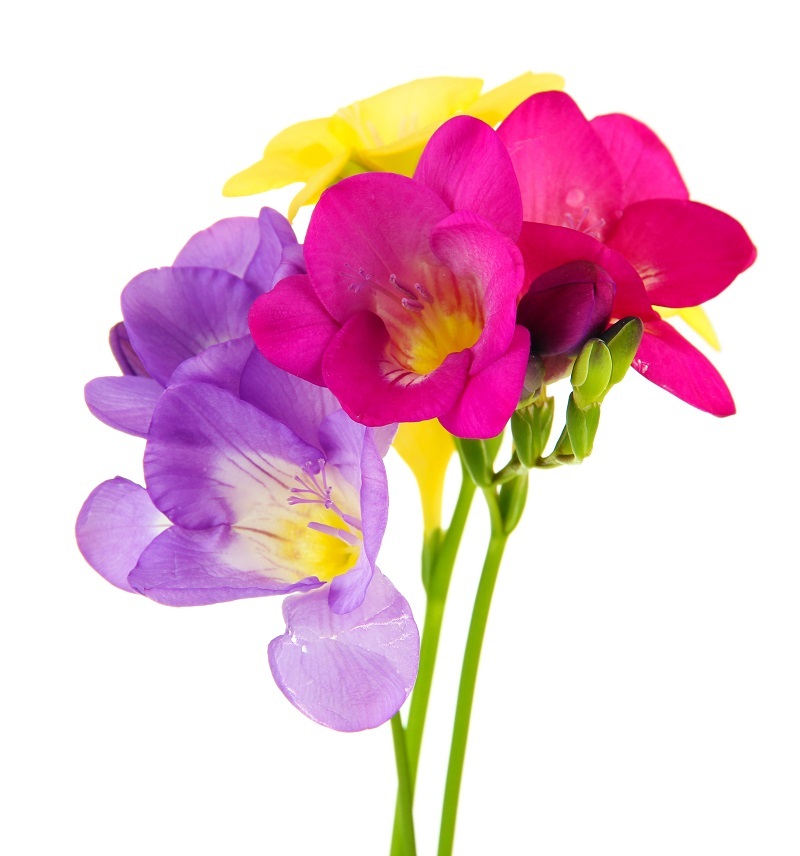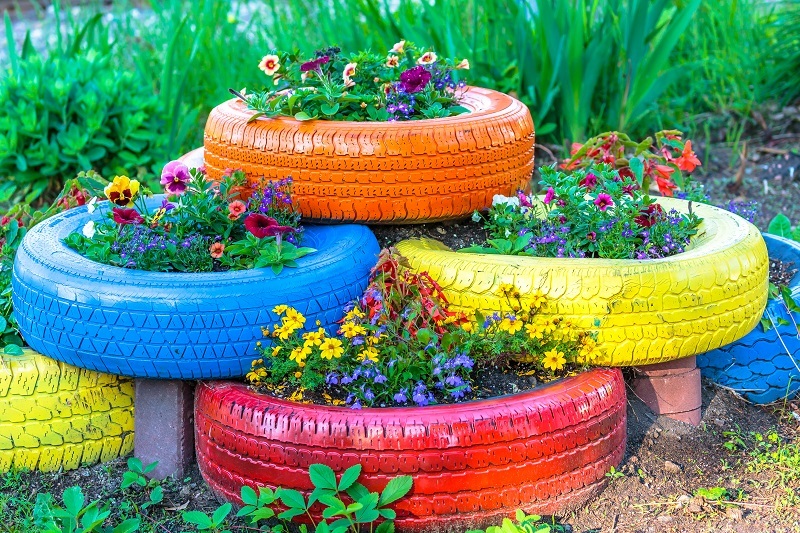The Orchid Whisperer: Insider Tips for Plant Care
Posted on 19/08/2025
The Orchid Whisperer: Insider Tips for Plant Care
Orchids, often seen as the epitome of elegance and exotic beauty, have long fascinated both casual gardeners and seasoned horticulturists. Despite their popularity, orchid plant care remains shrouded in mystery for many. What seems to be a delicate flower can actually thrive indoors with the right insider tips. As The Orchid Whisperer, I'm here to unveil the secrets behind growing lush, vibrant orchids in your home. Dive into this comprehensive guide to master the art of orchid care!
Why Orchids Captivate: A Brief Introduction
Orchids belong to one of the largest and most diverse plant families in the world, with more than 25,000 species and over 100,000 hybrids. Phalaenopsis (moth orchids), Cattleya, Dendrobium, and Oncidium are just a few types adored by enthusiasts and collectors. Their stunning blooms, intricate patterns, and unique growth habits make orchids a symbol of luxury and sophistication.
- Orchids bloom annually, some even multiple times a year.
- They purify the air and beautify any living space.
- Many varieties adapt well to indoor environments.

Insider Secrets: Essential Orchid Plant Care Tips
1. Choosing the Right Orchid for Your Environment
Not all orchids have the same requirements. The key to thriving orchids is matching the orchid variety to your home environment. For beginners, Phalaenopsis are the most forgiving and adaptable. If you have more light, Cattleya or Dendrobium might be your match.
- Low light? Opt for Phalaenopsis or Paphiopedilum.
- Bright, indirect light? Try Cattleyas and Oncidiums.
- Cooler temperatures? Explore Masdevallia or Cymbidium.
2. Mastering Orchid Watering Techniques
One of the most common mistakes is overwatering orchids. Their roots require both moisture and air to avoid rot. Water sparingly; let the medium dry slightly between watering. As a rule of thumb, water once a week in winter and twice a week during warmer months. Always use room-temperature, dechlorinated water.
- Touch the potting media--if it feels dry, it's time to water.
- Water thoroughly, letting it drain completely. Never let orchids sit in standing water.
- Misting can help maintain humidity, but avoid misting the flowers directly.
Pro Tip: Water your orchids in the morning to ensure leaves dry before nightfall, minimizing risk of disease.
3. Light Requirements for Orchid Success
Lighting is perhaps the most critical factor for orchid growth and blooming. Most orchids thrive in bright, indirect sunlight. Too much sun can cause leaf burn; too little produces limp, dark green leaves and poor blooms.
- East- or west-facing windows are ideal for most species.
- If you're short on natural light, consider grow lights designed for orchids.
- Some orchids change leaf color under stress: Red or purple hues may indicate excess light.
4. Humidity and Temperature: Striking the Right Balance
Orchids often originate from tropical forests where humidity and temperature are consistent. To mimic their natural habitat:
- Maintain humidity between 40-70%. Use a humidity tray or room humidifier if needed.
- Optimal temperature ranges from 60?F to 80?F (16?C to 26?C) for most common varieties.
- Avoid placing orchids near vents, radiators, or drafty windows.
Rapid temperature drops can damage blooms and discourage flowering, while consistent warmth encourages robust growth and repeat blooms.
5. Fertilizing: Nourish Your Orchid Properly
Feeding your orchid is essential for healthy growth and vibrant flowers. Use a balanced, water-soluble orchid fertilizer (20-20-20 or similar formulation) every 2-4 weeks, but always dilute it to half the recommended strength.
- "Weekly, weakly" is the mantra--light, consistent feeding works best.
- Flush the potting mix monthly with water to prevent mineral buildup.
- Discontinue fertilizing during periods of dormancy or when the plant is not actively growing.
The Art of Repotting and Potting Mediums
When and How to Repot Orchids
Orchids don't like cramped roots or stale potting mix. Ideally, repot orchids every 1-2 years, especially when the potting media breaks down or the roots outgrow the container.
- Select a pot slightly larger than the current one, with plenty of drainage holes.
- Use specialized orchid potting mixes--fir bark, sphagnum moss, or coconut husk. Never use regular soil, as it's too dense.
- Trim away dead or rotted roots before replanting.
Best time to repot: Shortly after flowering, when your orchid is starting new growth, is the prime window for repotting success.
Choosing the Right Potting Mix
Understanding the preferred growing medium for each orchid type is vital. For example:
- Phalaenopsis: Likes chunky bark or sphagnum moss for robust airflow.
- Cattleya: Prefers fast-draining, coarse bark.
- Dendrobium: Needs airy and lightweight mixes; coconut chips work well.
Preventing and Solving Common Orchid Problems
Yellowing Leaves and Leaf Drop
One of the most alarming signs for beginners is yellowing leaves. While natural leaf drop occurs as old foliage dies off, persistent yellowing can signal overwatering, underwatering, or a nutrient deficiency.
- Assess watering frequency and potting medium moisture.
- Check if the roots are healthy (white/silver when dry, green when wet).
- Review feeding schedule and adjust as necessary.
Dealing with Pests
Orchids may sometimes fall victim to pests such as aphids, mealybugs, spider mites, and scale. To protect your plant:
- Wipe leaves regularly with a damp cloth or spray with insecticidal soap.
- Isolate new orchids or any showing signs of infestation.
- Avoid over-fertilizing, which can attract pests and cause weak growth.
How to Encourage Orchid Reblooming
One of the most rewarding moments is witnessing your orchid bloom again. The secret? Patience and precision.
- Give your orchid a period of slightly cooler nighttime temperatures (about 10?F less than daytime) in the weeks following bloom drop.
- Maintain consistent care--do not force blooming by overwatering or overfeeding.
- Trim flower spikes only after they are entirely brown and dry.
Styling Orchids in Your Living Space
Orchids are not just houseplants--they are living pieces of art. Create a statement centerpiece on a dining table, or enhance a windowsill or office desk with these graceful blooms. Choose decorative containers with adequate drainage, and group orchids of different varieties to create a mini indoor jungle.
- Use pebbles, driftwood, or glass beads as creative accents.
- Rotate plants periodically to ensure even exposure to light and growth.
- Pair with other humidity-loving plants, like ferns, to boost health and aesthetics.

Frequently Asked Questions (FAQ) About Orchid Plant Care
How often should I water my orchid?
Most orchids need watering once every 7-10 days, but it varies based on variety and environment. Remember, it's better to under-water than over-water!
Why do my orchid's leaves look wrinkled?
Wrinkled leaves typically indicate a lack of water or root problems. Check roots for signs of rot or desiccation, and review your watering habits.
Can I grow orchids without a greenhouse?
Absolutely! Orchids like Phalaenopsis thrive in normal indoor humidity and temperature. Proper lighting and a little Orchid Whisperer TLC go a long way.
Do orchids rebloom on the same spike?
Some, like Phalaenopsis, can rebloom on the same flower spike. If the spike remains green, trim above a node to encourage new buds. If it's brown, remove it entirely.
Conclusion: Mastering the Art of Orchid Whispering
Becoming a true Orchid Whisperer is about observation, patience, and gentle care. These resilient plants reward you not only with mesmerizing blooms but also with the joy of nurturing something extraordinary. Whether you're just starting your orchid journey or refining your green thumb, armed with these exclusive insider orchid care tips, you'll find yourself surrounded by healthy, thriving orchids in no time.
Remember, the key to orchid success lies in understanding your plant's unique needs and responding with knowledge and care. Don't be discouraged by setbacks--every orchid lover has encountered trial and error. Embrace the journey and you'll soon be known among your circle as the true Orchid Whisperer.
For more in-depth guides, troubleshooting tips, and expert tricks, explore our other articles or leave a comment with your orchid care questions! Happy growing!
Latest Posts
The Orchid Whisperer: Insider Tips for Plant Care
Petals and Personalities: Find Your Floral Doppelganger
Top 10 Office Plants That Thrive with Minimal Attention
Decode Your Birth Flower's Message About You
Birth month flowers: discover the deep meanings and traditions behind them





